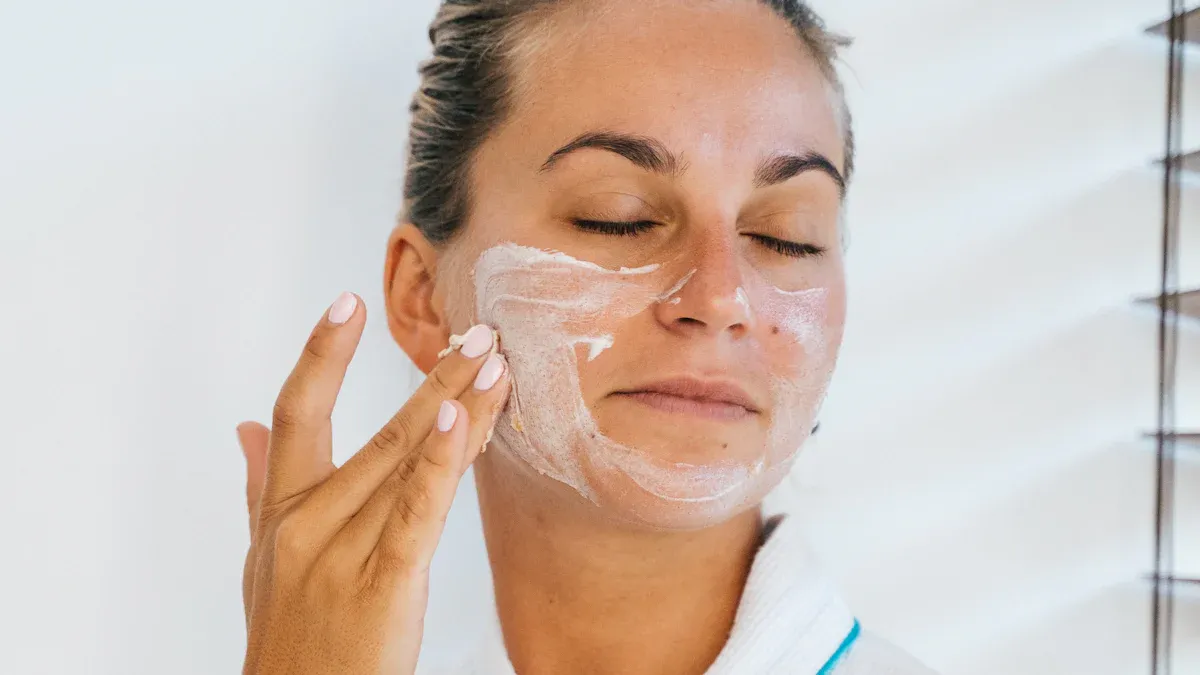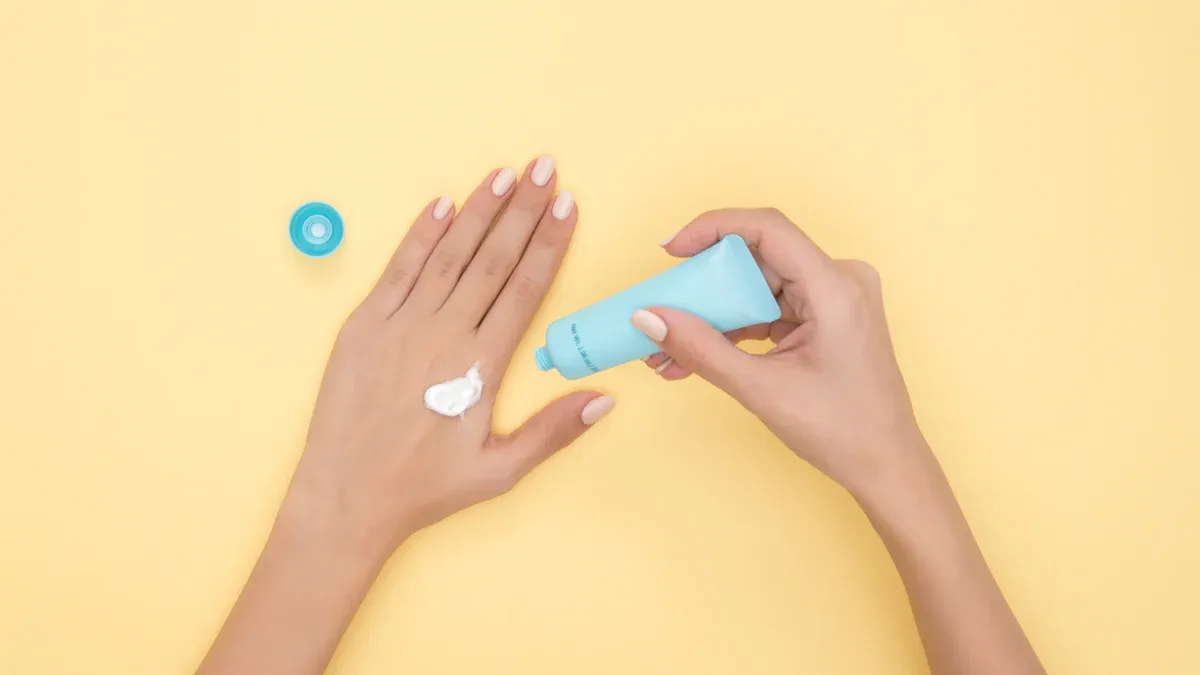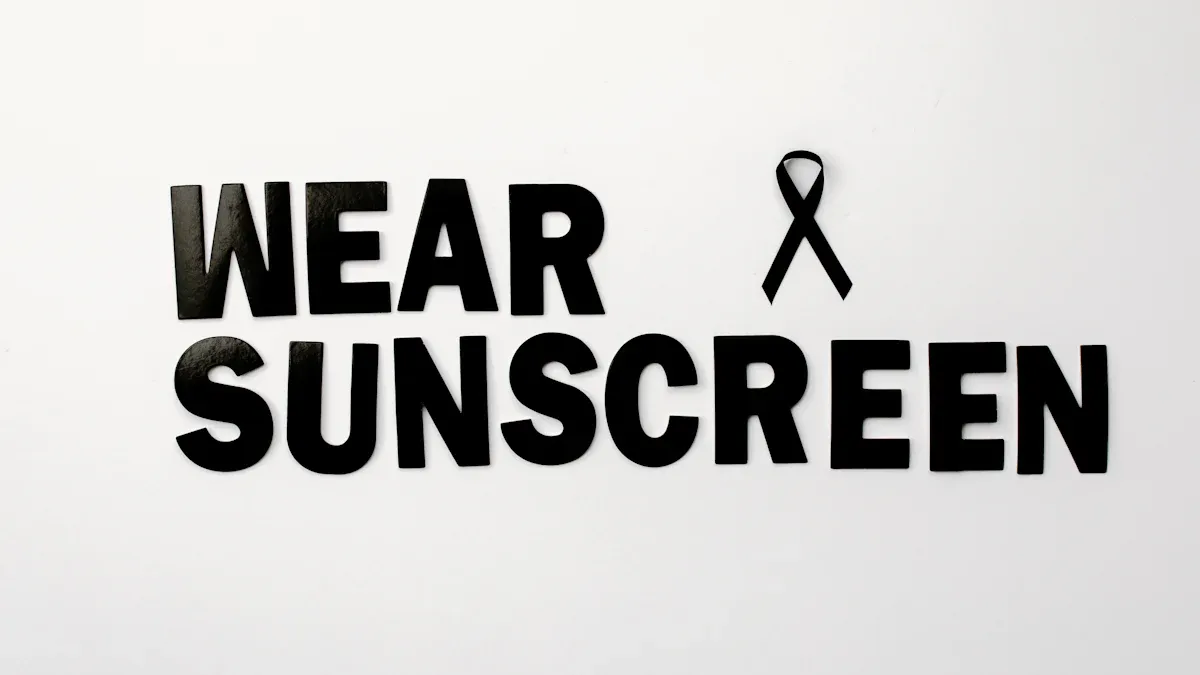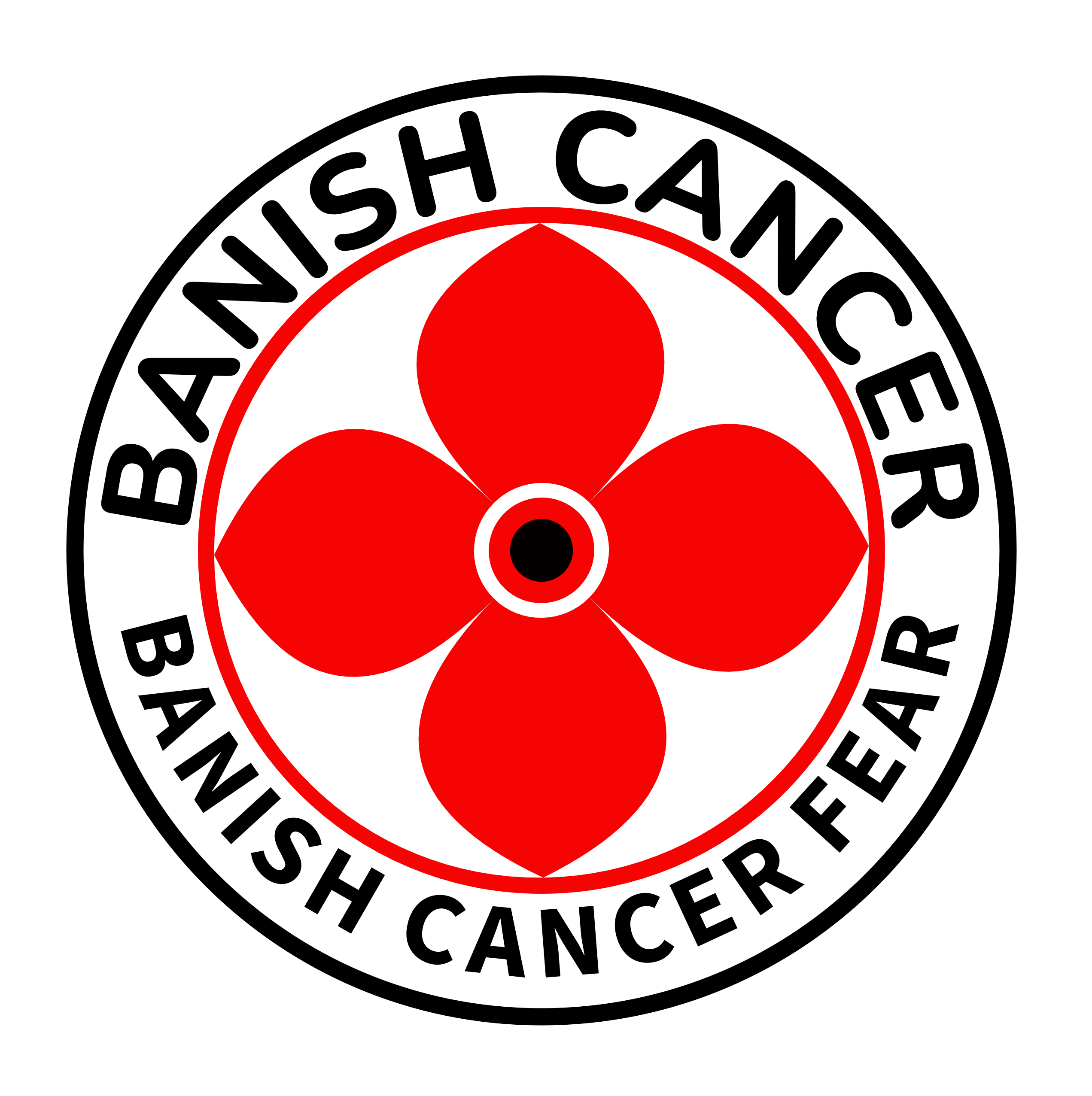6 Simple Ways to Prevent Skin Cancer Every Day

Your skin is your body’s largest organ, and protecting it should be a daily priority. Small, consistent actions can make a big difference in reducing your risk of skin cancer. By focusing on skin health and cancer prevention: what you need to know, you can safeguard your well-being and maintain healthier skin every day.
Key Takeaways
Apply broad-spectrum sunscreen with SPF 30 or higher daily. This protects your skin from harmful UV rays and reduces skin cancer risk.
Wear protective clothing, such as long-sleeved shirts and wide-brimmed hats. This acts as a barrier against UV rays and enhances your skin's safety.
Perform monthly skin checks to spot unusual changes. Early detection of skin issues can lead to better treatment outcomes.
Wear Sunscreen Every Day

Protecting your skin starts with sunscreen. Daily use shields your skin from harmful ultraviolet (UV) rays, reducing your risk of skin cancer. Incorporating sunscreen into your routine is one of the simplest and most effective ways to safeguard your health.
Choose a Broad-Spectrum Sunscreen
Not all sunscreens are created equal. Broad-spectrum sunscreens protect you from both UVA and UVB rays, which cause skin damage and increase cancer risk. The FDA defines broad-spectrum sunscreens as those that provide adequate protection against both types of radiation.
UVA rays penetrate deep into your skin, causing premature aging and increasing cancer risk.
UVB rays primarily cause sunburn and play a significant role in skin cancer development.
Look for a sunscreen labeled "broad-spectrum" with an SPF of 30 or higher. These products combine agents that filter both UVA and UVB rays, offering comprehensive protection.
Apply Generously and Reapply Often
Applying sunscreen correctly is just as important as choosing the right one. Use enough to cover all exposed skin, including often-missed areas like your ears and the back of your neck. Studies show that reapplying sunscreen early and frequently minimizes UV exposure significantly.
Timing | Benefit |
|---|---|
15–30 minutes before sun exposure | Allows the sunscreen to bind to your skin effectively. |
15–30 minutes after exposure begins | Reduces UV exposure by 60% to 85%. |
After swimming or sweating | Maintains protection after sunscreen is removed. |
Make sunscreen a habit, and your skin will thank you. 🌞
Use Protective Clothing

Protective clothing acts as a physical barrier between your skin and harmful UV rays. Choosing the right garments can significantly reduce your risk of skin cancer.
Opt for Long-Sleeved Shirts and Pants
Long-sleeved shirts and pants provide excellent coverage, shielding your skin from direct sunlight. Fabrics with a high Ultraviolet Protection Factor (UPF) rating are especially effective. For example, a UPF 50 fabric blocks 98% of UV rays, drastically lowering your exposure risk.
Factor | Evidence |
|---|---|
Effectiveness | Clothing is the most effective form of sun protection. |
UPF Rating | A UPF 50 fabric blocks 98% of UV rays, significantly reducing exposure risk. |
Color | Dark or bright colors absorb UV rays better than lighter shades, providing better protection. |
Construction | Densely woven fabrics like denim and canvas offer more protection than sheer materials. |
Fit | Loose-fitting clothing is preferable as tight clothing can reduce protection levels. |
Dark, tightly woven fabrics like denim offer superior protection. A long-sleeved denim shirt, for instance, can provide a UPF of about 1,700, offering nearly complete sun protection. Loose-fitting clothing is also recommended, as it allows for better airflow while maintaining coverage.
Don’t Forget Hats and Sunglasses
Hats and sunglasses are essential for protecting areas that clothing may not cover. A wide-brimmed hat shields your face, neck, and ears from UV rays. Tightly woven materials and darker colors enhance the hat’s effectiveness.
Feature | Benefit |
|---|---|
Wide brim | Shades face, ears, and neck from UV rays. |
Tightly woven fabric | Blocks UV rays effectively, unlike loosely constructed hats. |
Darker color | May offer more UV protection. |
Sunglasses protect your eyes and the delicate skin around them. Look for sunglasses that block both UVA and UVB rays. This reduces the risk of cataracts and shields your eyes from harmful radiation. Together, hats and sunglasses provide comprehensive protection for your head and face.
By incorporating protective clothing into your daily routine, you can take a significant step toward preventing skin cancer. 🧢🕶️
Avoid Peak Sun Hours
Stay Indoors Between 10 a.m. and 4 p.m.
The sun’s rays are strongest between 10 a.m. and 4 p.m., making this the most dangerous time for UV exposure. Staying indoors during these hours can significantly reduce your risk of skin damage and skin cancer. Research shows that almost half of harmful UVB radiation occurs during this time. UVB rays are powerful enough to cause sunburn, even on cloudy days.
In the continental United States, UV radiation peaks during these midday hours. Studies have found a direct link between UV exposure during this time and an increased risk of developing skin cancer. By planning your outdoor activities earlier in the morning or later in the afternoon, you can protect your skin from unnecessary harm.
Tip: If you need to go outside during peak hours, wear sunscreen and protective clothing to minimize UV exposure.
Seek Shade When Outdoors
If you must be outdoors during peak sun hours, seeking shade is one of the easiest ways to protect your skin. Shade from trees, umbrellas, or canopies can block a significant amount of UV radiation. However, it’s important to remember that shade alone doesn’t provide complete protection.
UVB radiation is at its highest during midday, so combining shade with sunscreen offers better protection than relying on shade alone. Travelers and outdoor enthusiasts are often advised to avoid direct sunlight during these hours to reduce their exposure.
Note: Carry a portable umbrella or find shaded areas when spending time outside. This simple habit can help you avoid harmful UV rays and keep your skin safe.
Avoid Tanning Beds
Tanning beds may seem like a quick way to achieve a sun-kissed glow, but they come with serious risks. Avoiding them is one of the most effective ways to protect your skin and reduce your chances of developing skin cancer.
Understand the Risks of UV Exposure
Tanning beds expose your skin to concentrated UV radiation, which is far more intense than natural sunlight. This exposure damages your skin cells and increases your risk of skin cancer. In fact, indoor tanning devices can emit UV radiation 10 to 15 times stronger than the midday sun.
Did you know? UV radiation is classified as a Group 1 carcinogen by the International Agency for Research on Cancer (IARC), placing it in the same category as tobacco and asbestos.
Statistic/Study | Evidence |
|---|---|
Skin Cancer Cases Linked to Indoor Tanning | Over 419,000 cases annually in the U.S. attributed to indoor tanning. |
Increased Risk of Skin Cancer | 83% increased risk of squamous cell carcinoma for indoor tanners. |
Melanoma Risk | Women who tanned indoors are six times more likely to develop melanoma in their 20s. |
Early Use of Tanning Beds | Starting tanning before age 35 increases melanoma risk by 75%. |
There is no such thing as a "safe tan." Tanning is your skin’s response to UV damage, not a sign of health. Protect yourself by avoiding tanning beds entirely.
Embrace Natural Skin Tones
Society often promotes tanned skin as a beauty standard, but this mindset is changing. Embracing your natural skin tone can boost your confidence and protect your health. Studies show that many people tan to feel attractive, but this pressure can lead to body dissatisfaction.
Media influence often encourages tanning, but awareness of its risks is growing.
Over 20% of people associate pale skin with unattractiveness, but this perception is shifting.
Choosing to celebrate your natural beauty helps counter harmful societal pressures.
Your skin’s natural tone is beautiful and unique. By rejecting tanning beds and embracing your natural look, you protect your skin and set a positive example for others. 🌟
Perform Regular Skin Checks
Performing regular skin checks is one of the most effective ways to detect skin cancer early. By examining your skin frequently, you can spot unusual changes and take action before they become serious.
Learn to Recognize Unusual Spots or Changes
You should familiarize yourself with the appearance of your skin. This helps you notice any unusual spots, moles, or changes that could indicate a problem. Look for signs like asymmetry, irregular borders, uneven colors, or growth in size. These are often referred to as the "ABCDEs" of melanoma detection:
Asymmetry: One half of the mole does not match the other.
Border: Edges appear irregular, blurred, or jagged.
Color: Uneven shades of brown, black, or other colors.
Diameter: Spots larger than a pencil eraser (6mm).
Evolving: Any change in size, shape, or color over time.
A study published in JAMA Dermatology found that individuals who performed regular skin checks were more likely to detect early-stage melanomas. Early detection improves treatment outcomes and increases survival rates. Make it a habit to check your skin monthly, using a mirror for hard-to-see areas like your back.
Schedule Annual Dermatologist Visits
Even if you perform regular self-checks, scheduling an annual visit with a dermatologist is essential. Dermatologists have the expertise to identify skin abnormalities that you might miss. They can also use advanced tools to examine suspicious spots more closely.
During your appointment, the dermatologist will conduct a full-body skin exam. This ensures that any potential issues are addressed promptly. Annual visits are especially important if you have a family history of skin cancer or a high number of moles. These professional checkups complement your self-checks and provide an extra layer of protection.
By combining self-checks with annual dermatologist visits, you take a proactive approach to skin health and cancer prevention: what you need to know. These simple steps can make a significant difference in your overall well-being. 🩺✨
Maintain a Healthy Lifestyle
Your lifestyle choices play a crucial role in protecting your skin and reducing the risk of cancer. By focusing on healthy habits, you can improve your overall well-being and support long-term skin health.
Eat a Diet Rich in Antioxidants
Antioxidants are powerful compounds that help protect your skin from damage caused by free radicals. These unstable molecules can harm your skin cells and increase the risk of cancer. Including antioxidant-rich foods in your diet can strengthen your skin’s defenses and promote healing.
Some excellent sources of antioxidants include:
Fruits: Berries, oranges, and grapes are packed with vitamins like C and E.
Vegetables: Spinach, kale, and broccoli provide essential nutrients for skin repair.
Nuts and Seeds: Almonds and sunflower seeds contain healthy fats and antioxidants.
Experts agree that a balanced diet rich in these foods can significantly reduce cancer risk. The Mayo Clinic emphasizes that healthy eating habits not only improve your skin but also enhance your overall health. Start by adding colorful fruits and vegetables to your meals every day.
Stay Hydrated and Avoid Smoking
Drinking enough water keeps your skin hydrated and helps flush out toxins. Dehydrated skin becomes dry and more prone to damage. Aim to drink at least 8 glasses of water daily to maintain healthy, glowing skin.
Smoking, on the other hand, damages your skin and increases your risk of cancer. Tobacco contains harmful chemicals that break down collagen and elastin, leading to premature aging. Quitting smoking improves your skin’s appearance and reduces your cancer risk.
By staying hydrated and avoiding harmful habits, you take an important step toward skin health and cancer prevention: what you need to know. These small changes can make a big difference in your overall well-being.
Skin Health and Cancer Prevention: What You Need to Know
The Importance of Consistency in Daily Habits
Consistency is the foundation of effective skin cancer prevention. Small, repeated actions protect your skin from harmful UV rays and reduce long-term risks. For example, applying sunscreen daily, even on cloudy days, ensures your skin stays shielded from UV exposure. Wearing protective clothing and seeking shade during peak sun hours further strengthens your defense.
Data highlights the importance of these habits. According to the Surgeon General, nearly 90% of melanomas result from UV exposure. Communitywide efforts to promote sun-safe behaviors have shown significant success in reducing risks. A single sunburn in childhood can double your chances of developing skin cancer later in life. Building consistent habits early helps protect your skin for years to come.
Evidence Description | Key Insight |
|---|---|
Sunburns in childhood are a clear risk factor for skin cancers later in life. | Building healthy habits early can lead to increased sun protection into adulthood. |
Community interventions can effectively promote sun-safe behaviors. | Multicomponent, communitywide interventions are recommended for effective skin cancer prevention. |
How Small Changes Can Make a Big Difference
Simple changes in your daily routine can significantly improve your skin health. For instance, swapping regular sunglasses for UV-blocking ones protects your eyes and the surrounding skin. Choosing a wide-brimmed hat instead of a baseball cap shields your face, neck, and ears more effectively. These small adjustments require little effort but offer substantial benefits.
The financial and health impacts of skin cancer are staggering. Treating skin cancer costs $8.1 billion annually, and nearly 9,000 people die from melanoma each year. By adopting small, preventive measures, you can contribute to reducing these numbers.
Statistic | Value |
|---|---|
Annual Skin Cancer Treatment Cost | $8.1 billion |
Annual Melanoma Deaths | Nearly 9,000 |
Percentage of Melanomas Caused by UV Exposure | 90% |
Every small step you take adds up. Whether it’s wearing sunscreen, staying hydrated, or performing regular skin checks, these actions collectively protect your skin and promote long-term health. Skin health and cancer prevention: what you need to know is that these small changes truly matter.
Preventing skin cancer starts with small, consistent habits. These six steps—sunscreen, protective clothing, avoiding peak sun hours, skipping tanning beds, regular skin checks, and a healthy lifestyle—can transform your skin health.
Tip: Begin today. Protecting your skin now ensures a healthier, brighter future. Your daily choices matter! 🌟
FAQ
What SPF level should I use for daily sunscreen?
Choose a sunscreen with SPF 30 or higher. It provides adequate protection against harmful UV rays for most skin types during daily activities. 🌞
Can I get enough vitamin D while protecting my skin?
Yes! Spend short periods in the sun or eat vitamin D-rich foods like salmon and eggs. Supplements can also help maintain healthy levels. 🥚🐟
How often should I perform skin checks?
Check your skin monthly. Look for unusual spots, moles, or changes. Early detection improves treatment outcomes and helps prevent serious issues. Use a mirror for hard-to-see areas. 🪞
See Also
An In-Depth Overview of Various Cancer Types
Recognizing Symptoms and Treatments for Conjunctival Melanoma
Identifying Symptoms of Basal Cell Carcinoma Explained
